Nothing stays the same in any technology environment. Whether it’s the Network Operations Center (NOC) or another IT organization, there’s simply no such thing as perfect service. Change makes it a constantly moving target, so teams have to continually improve how they operate to get as close to perfect as possible.
ITIL* Continual Service Improvement (CSI) provides IT organizations with best practices and structures for improving their service and service management processes. With it, teams can constantly re-examine what’s working, what’s not, and make ongoing, incremental improvements to their processes while keeping service aligned to the business’s changing needs. An effective CSI program constantly looks for ways to improve process efficiency and cost-effectiveness throughout the entire ITIL Lifecycle.
This guide briefly explains the benefits of an effective ITIL-aligned CSI program and how to employ one to continually improve a NOC operation and the quality of service it delivers. Use this guide as a starting point for developing your own CSI program or as a checklist for finding an outsourced NOC support partner capable of conducting the robust continuous improvement your organization deserves (and your infrastructure demands).
Want to learn more about how CSI fits into the broader support structure that enables the NOC to meet and exceed its service levels, prevent downtime, and improve network, infrastructure, and application performance? Grab our free white paper, A Practical Guide to Running an Effective NOC.
Want to connect with NOC experts to understand better how CSI could benefit your support operation? Drop us a line.
The Benefits of a Robust CSI Program
A well-resourced CSI program should return the investments made in it many times over through incremental efficiency gains (and avoided remediation). Organizations can identify and implement improvements to IT services and realize many benefits and value-adds, including:
- More valuable and complete information about current services (and possibly where those services would benefit from changes)
- More reliable, stable, and available service
- Better resource allocation and utilization
- Better metrics and reporting
- A clearer view of current possible future capabilities (“what can we do now, and what will we need to do tomorrow?”)
- Better working relationships between IT organizations, end-users or customers, and other functional areas
- Higher customer satisfaction
Understanding the NOC’s Role in ITIL CSI
The NOC benefits immensely from a robust CSI program (which helps the organizations that rely on the NOC to protect their infrastructures and stay up and running 24x7).
CSI puts core support processes into practice, such as change management and quality assurance. These activities are critical in complex, multifaceted IT environments common among enterprises and large service providers yet are often overlooked and underutilized in the NOCs they rely on.
Very often, resource constraints or a lack of perceived importance prevent organizations from making CSI a genuinely “continual” program. Instead, improvement becomes a project. Only after chronic problems or significant failures force attention on themselves do teams convene to fix what’s broken and consider what improvements are necessary.
And once they implement those improvements, everyone turns their attention back to routine work until new changes go unaddressed, disaster strikes again, and another improvement project is hurriedly scheduled to put the fires out. While obvious needs for improvement can of course be made through one-time projects, not every imperfection or shortcoming makes itself known. Most don’t.
A truly continual CSI program constantly works to sniff out these hard-to-see issues and opportunities and act on them through a continuous process that stretches into every service lifecycle phase.
In the NOC, CSI’s function is three-fold:
- Assess the NOC’s ongoing success in delivering effective ITSM
- Ensure that the IT service catalog is continuously aligned with current and future business needs
- Identify and act on opportunities to improve each service, thereby optimizing speed and effectiveness while boosting process maturity
In short, a good NOC CSI program breaks the nervous cycle of waiting for problems to reveal themselves and hurt your organization—whether through compounded inefficiencies (teams not working as smart as they could be day after day) or through outages that result in expensive downtime.
With an ongoing assessment process, IT organizations detect and address issues and opportunities by looking for and acting on their early indicators.
How to Successfully Operationalize ITIL CSI in the NOC
Teams must plan and schedule CSI as a routine business process with supporting activities, inputs, outputs, role definition, and reporting outcomes. To put CSI into practice to support the NOC or any other IT organization, the process must be thoughtfully and intentionally operationalized.
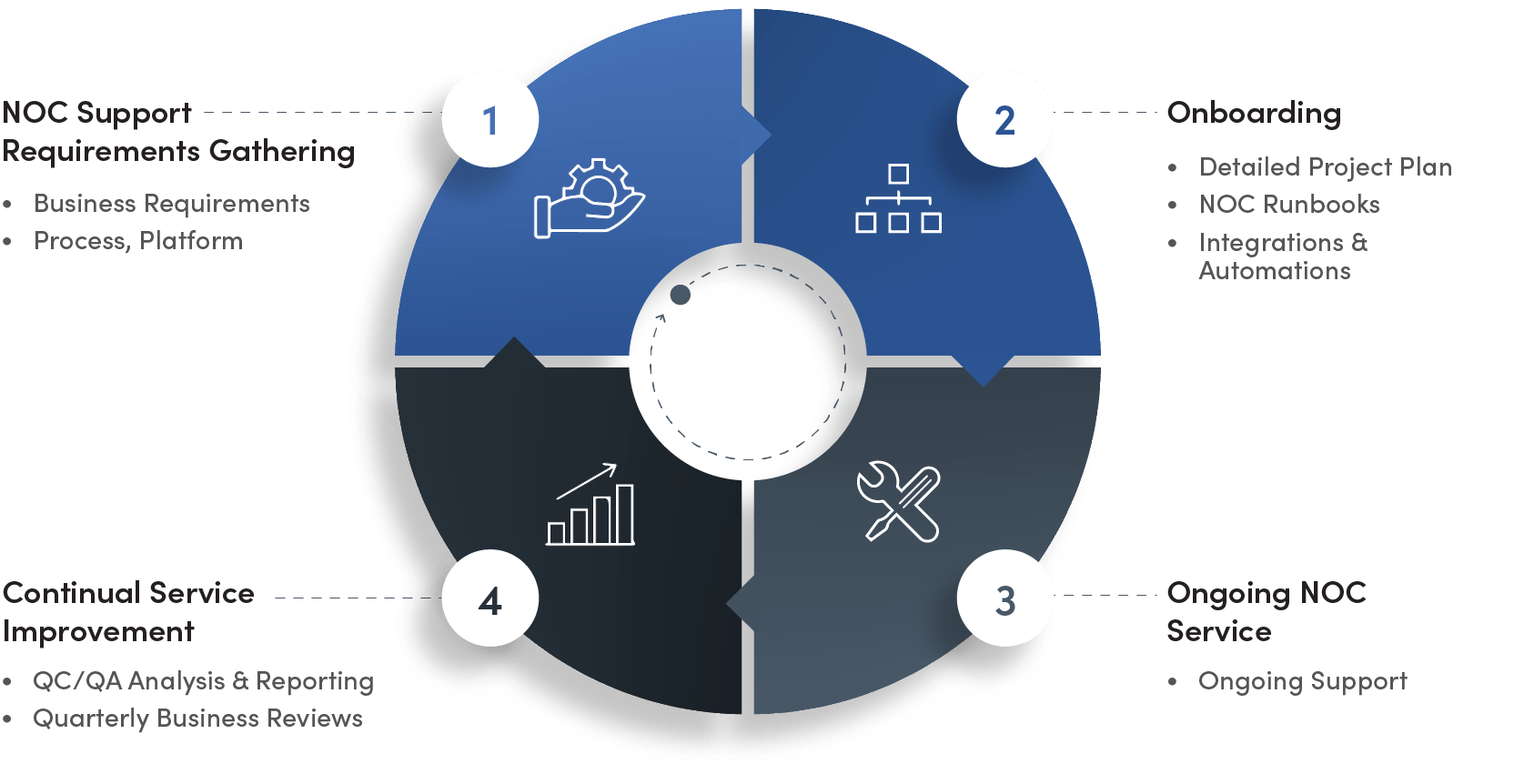
With years of experience developing our own CSI program and making it a component of our broader Customer Experience Management program for enterprises, service providers, and OEMs in need of expert outsourced NOC support, we identified a few practical considerations for bringing ITIL CSI to life in and around the NOC.
Again, if you’re building a new NOC or optimizing an existing one, use this guide as a playbook for bringing a CSI program to life to support it. If your organization needs an outsourcing partner to take on NOC service for you, use this guide as a checklist for zeroing in on the provider best capable of delivering maximum value through a commitment to continual improvement.
We’ve broken down our CSI operationalization tips by each of the steps laid out in ITIL CSI—condensing some of them together where appropriate.
Identifying the strategy for improvement
The first step of ITIL CSI involves establishing the objective and process necessary to deliver the desired result or meet a specific goal.
Often, IT organizations rely on gut feelings and assumptions rather than cold, hard data to guide their improvement projects. But gut-checks are notoriously unreliable at setting objectives and strategizing around them.
A good CSI program establishes a process to replace these gut-checks with evidence-based data reviews. Rather than relying on assumptions, teams use data first to validate the need for improvement and then set an appropriate objective before developing a process (or strategy) to achieve it.
Here’s an example to illustrate: A quality team identifies a worrying trend in the NOC and, after a discussion with some other groups, a few possible strategies to deal with it emerge.
Without effective CSI in place, a team may simply work off an assumption to set a vague objective and a strategy based solely on what’s known and comfortable. With effective CSI in place, the quality team pulls up a list of important questions to ask of its service data to define the precise opportunity for improvement and how best to implement it.
For instance:
- “Are we seeing an increase in the number of QAs?”
- “Did this come in through the client experience team?”
- “Are we seeing an increase in time-to-ticket or time-to-impact-assessment?”
In short, a robust CSI program can effectively identify the strategy for improvement when it can offer a compelling answer to the following question no matter where or when it comes up: What data suggests there’s a need for improvement, and what does the answer to that question tell us about the best way to go about implementing it?
Defining what will be measured
The second step in ITIL’s CSI process involves specifying the targeted service improvement and establishing the output expectations.
The old cliche applies here: “If you can’t measure it, you can’t improve it!” An imprecise objective undermines the whole effort if it’s articulated in a way that makes it difficult or impossible to measure. It also invites setting the bar too low to solve or prevent the problem that prompted improvement in the first place.
A robust CSI program should be as precise as possible when specifying the service improvement it’s targeting. That means painting a complete picture of what a successful outcome looks like so there’s no confusion about whether you did or didn’t arrive there after the strategy is implemented. What metrics or other measurements will indicate success or failure toward that outcome?
Here at INOC, for example, each improvement we execute, both internally and with clients, is guided by a documented Service Improvement Plan that offers standardized guidance for gathering information and facilitating close communication when either side spots an opportunity for improvement.
If an improvement directly impacts a client’s service, a Service Improvement Plan is used to help both sides set expectations and communicate effectively so everyone understands the stated concerns, what will be done to address them, and what outcome to expect for service improvement. For example, a trending quality assurance issue that points back to a process problem may be addressed by a full runbook review to identify and clarify specific processes followed by training on those improvements. The outcome may be a change in a specific performance metric or a reduction in QAs—whatever will demonstrate that the improvement is indeed working.
If it’s an internal process improvement—one confined to our own platform—the process is virtually the same, just pointed inward. We work across our teams to make sure everyone is clear on the plan and has documented outcomes that provide a means to measure the success of the strategy that’s implemented.
In short, a robust CSI program accomplishes the second step of ITIL CSI—defining what will be measured—when it can:
- remove subjectivity and any room for interpretation from the outcome it seeks to achieve; and
- identify clear indicators that will validate the improvement’s success or failure toward the outcome.
Gathering, processing, analyzing, and presenting the data
Today, most IT organizations process and analyze data used for CSI as they gather it, so we’ve condensed these processes, as well as data presentation, into one discussion.
Many IT organizations don’t have problems collecting data—just the opposite: They're overwhelmed by it. Technology has enabled us to open the flood gates and collect massive amounts of information—much of which is un-actionable noise. The challenge is figuring out what data to pay attention to and how to connect the dots to harvest practical insights from it. There are endless opportunities to get this wrong and waste valuable time chasing red herrings, which is why proper processing and analysis are so important.
With CSI, once an IT organization determines which data to pay attention to, the task shifts to correlating that data to create a complete picture of the need for improvement and what a successful outcome will look like. In the NOC, that means bringing disparate sources of information such as emails, phone calls, and QAs together to understand if the information gleaned across them does in fact correlate to a given issue or opportunity—and if so, how.
Therefore, to effectively support a NOC operation, a CSI program must ensure it has the right data at the outset of an improvement project and at the “end” (once the improvement has been implemented and operationalized to verify its success). Does the data support your observations about the success or failure of a given outcome?
It’s important to be mindful of the challenges that derail NOCs and their support organizations when it comes to gathering data so you can navigate around them—namely, tool limitations and unclear processes.
- Tool limitations: Sometimes tools inadvertently get in the way of good data collection, when, for example, free text fields prevent the level of specificity needed compared to hard-coded drop-downs. This is where inefficiencies quietly hurt productivity and introduce layers of risk when CSI teams need to ask for more precise information.
- Unclear processes: Unclear ticketing or other documentation processes can also degrade the value of the data.
Lastly, it’s important to apply the same rigor in presenting data as your organization does in processing and analyzing it. A good CSI program is thoughtful about how it presents the data to ensure it tells an accurate, easily understood, and appropriately contextualized story for management and other stakeholders.
Visualizing the insights gleaned from the previous steps through charts, facts, and figures is critical to getting that story across. But great data presentation also can’t be the only means of telling it. People need to contextualize and communicate that data so everyone can understand exactly what was done, what did or didn’t work, and what needs to happen next.
Implementing the service improvement
While the specific process of implementing a service improvement is entirely dependent on the situation, the through-line for every good process is, again, a focus on communication—especially when it comes to setting clear expectations. Those responsible for CSI should be able to clearly communicate what they’re doing, why, how, and when they’re doing it, and what risks are involved. Are these acceptable risks? Do the benefits of improvement outweigh the costs associated with these risks?
Once an improvement has been implemented, CSI teams need to clearly and definitively answer: Did it work?
That means reviewing and analyzing the data again and sharing those results—giving more meaning to the word “continual” by returning to the data and asking the same questions of it you did at the start:
- “How can we do this even more effectively and efficiently?”
- “What, if any, risks may arise following this improvement?”
- “How can we provide more value to our end-users and customers around this service?”
- “How can we ensure they see the value in us?”
Signs Your Organization (or NOC) May Be in Need of More Robust CSI
While there are many possible signs that an IT organization could benefit from CSI, two, in particular, come up frequently:
- Your organization doesn’t clearly see the value of service: Whether you manage a NOC internally or outsource support to a third-party touting its CSI program—if you don't understand how its activities are translating into better service—it’s almost certainly in need of improvement itself. To reiterate a previous point, CSI’s investments should deliver value that far exceeds its cost. If you’re wondering how CSI is paying off, it’s clear that it’s not as good as it could be.
- Confused expectations: Failure to set, communicate, or manage clear expectations is another massive signal that CSI isn’t working. Without structured processes and close-knit management, the complaint is predictable: “I thought they were supposed to call me to get this figured out!”
A Checklist for Putting ITIL CSI into Practice
The following questions can be instructive as starting points for developing or enhancing an internal CSI program or evaluating a current or prospective service provider’s offering.
- Is the CSI team trusting or challenging their assumptions about the need and nature of improvement opportunities?
- Is the CSI team conducting research and working cross-functionally to better understand the best way to make improvements?
- If CSI is entrusted to an outsourced NOC support provider, are they working directly with you, their client, to gather information, develop a strategy, and set expectations?
- Is the CSI team clearly defining desired outcomes so they can definitively validate an improvement’s success or failure?
- Does the NOC have the data repositories and metrics established to both collect the right reporting data to avoid red herrings and provide reliable benchmarks for measuring improvement results?
- Is the CSI team setting quantifiable measurements for success?
- Is CSI guided by a documented plan that helps all impacted parties communicate and understand expectations?
- Does CSI go above and beyond ITIL’s best practices to deliver a higher level of Customer Experience Management?
Final Thoughts and Next Steps
A well-run CSI program supporting the NOC or any other IT organization brings both tangible and intangible benefits. Tangibly, it lifts performance across service and translates those performance gains into business value. Metrics used to measure outcomes should steadily get better and better over time, and the quantifiable gains achieved by realizing those improvements rise as well. Tangible results are also expressed through increased customer and employee satisfaction.
The intangible benefits are just as important, even if they’re hard to quantify or express. Internally, a good CSI program can strengthen relationships between individuals and teams by encouraging proactive cooperation and collaboration around common goals without the stress of convening to put out a fire. Over time, the brand’s reputation also improves as it becomes associated with a proactive, customer- or end-user-focused approach to service.
No matter how CSI comes to life in your organization, it should ensure that it’s applying the same processes it employs to also keep itself efficient. CSI shouldn’t be regarded as a burden on the people, platform, or processes it serves; rather, it should complement and enhance all three of those elements in a way that’s clear and understood.
Here at INOC, we bring a fully ITIL-aligned CSI program to meet and exceed the demanding NOC support needs of enterprises, service providers, and OEMs worldwide. Here are just a few of the unique value-adds that come with turning up outsourced NOC support on the INOC Ops 3.0 Platform:
- Dedicated Client Service Managers work directly with each of our clients to ensure SLAs are being met, proactively prepare for service changes, and drive CSI.
- A dedicated quality control team keeps most concerns off of your radar entirely. We pull large samples of both specific and random tickets to understand how they were created, worked, and closed to learn from successes, identify opportunities for improvement, and understand any potential impact on service.
- A dedicated quality assurance team spots trending issues, evaluates adherence to procedures, quality of work delivered, response times for notifications and escalations, and various other criteria that factor into service. Each lesson, large and small, is applied to continuously improve our workforce, our platform, and our processes so we can pass the value on to you.
Every ounce of feedback we receive, good or bad, is put through the same analysis and resolution process we employ for quality control. Was service phenomenal? We’ll find out why and learn from it. Did something go wrong? We won’t stop analyzing until we identify the true root cause and correct it for good. Again, nothing is safe from improvement. Our people, platform, and processes are constantly being fine-tuned to deliver outstanding service.
INOC offers two comprehensive solutions to help organizations maximize their NOC capabilities:
NOC Support Services
Our award-winning NOC support services, powered by the INOC Ops 3.0 Platform, provide comprehensive monitoring and management of your infrastructure through a sophisticated multi-tiered support structure. This advanced platform combines AIOps, automated workflows, and intelligent correlation to help you:
- Achieve maximum uptime through proactive monitoring and accelerated incident response
- Reduce manual intervention with automated event correlation and ticket creation
- Scale your support capabilities without the complexity of building internal NOC infrastructure
- Access real-time insights through a single pane of glass for efficient incident and problem management
- Leverage our deep expertise across technologies while maintaining complete visibility through our client portal
NOC Operations Consulting
Our consulting team provides tactical, results-driven guidance for organizations looking to optimize their existing NOC or build a new one from the ground up. We help you:
- Assess your current operations and identify opportunities for improvement
- Develop standardized processes and runbooks that enhance efficiency
- Implement best practices for event management, incident response, and problem management
- Design scalable operational frameworks that grow with your business
- Transform your NOC into a proactive, high-performance operation
Both services are backed by INOC's extensive experience serving enterprises, communications service providers, and OEMs worldwide. Our team brings proven methodologies and deep technical expertise to help you achieve your operational goals, whether through direct support or strategic guidance.
Need to improve efficiency and effectiveness throughout your IT organization? Contact us to learn more about how we can help you deliver the continual service improvement you need to meet the infrastructure demands of today and tomorrow. Be sure to grab our free white paper below for a deep dive into each of the top challenges every NOC should be designed to overcome and practical steps for bringing these enhancements to life.
*Originally developed by the UK government’s Office of Government Commerce (OGC) - now known as the Cabinet Office - and currently managed and developed by AXELOS, ITIL is a framework of best practices for delivering efficient and effective support services.
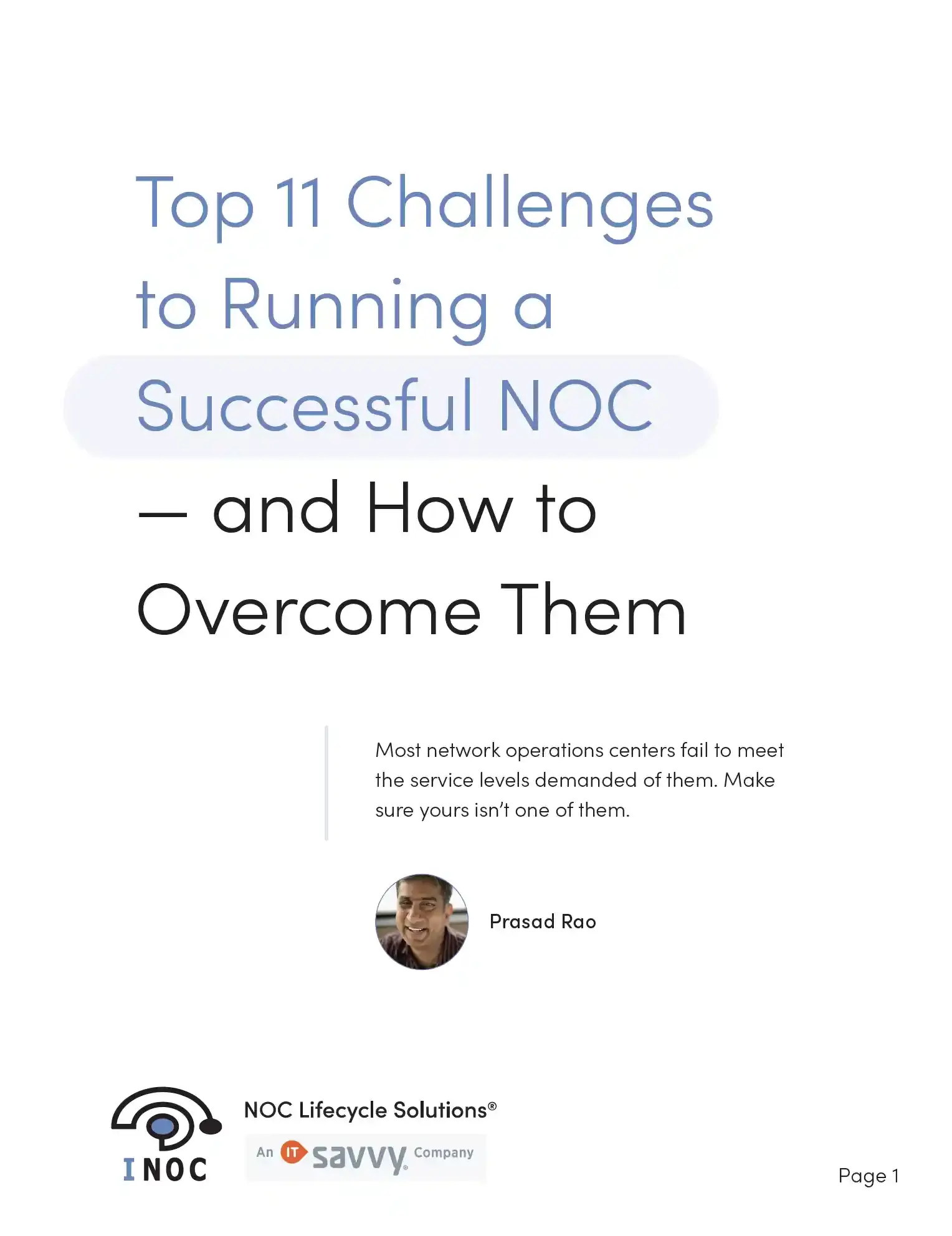
Free white paper Top 11 Challenges to Running a Successful NOC — and How to Solve Them
Download our free white paper and learn how to overcome the top challenges in running a successful NOC.






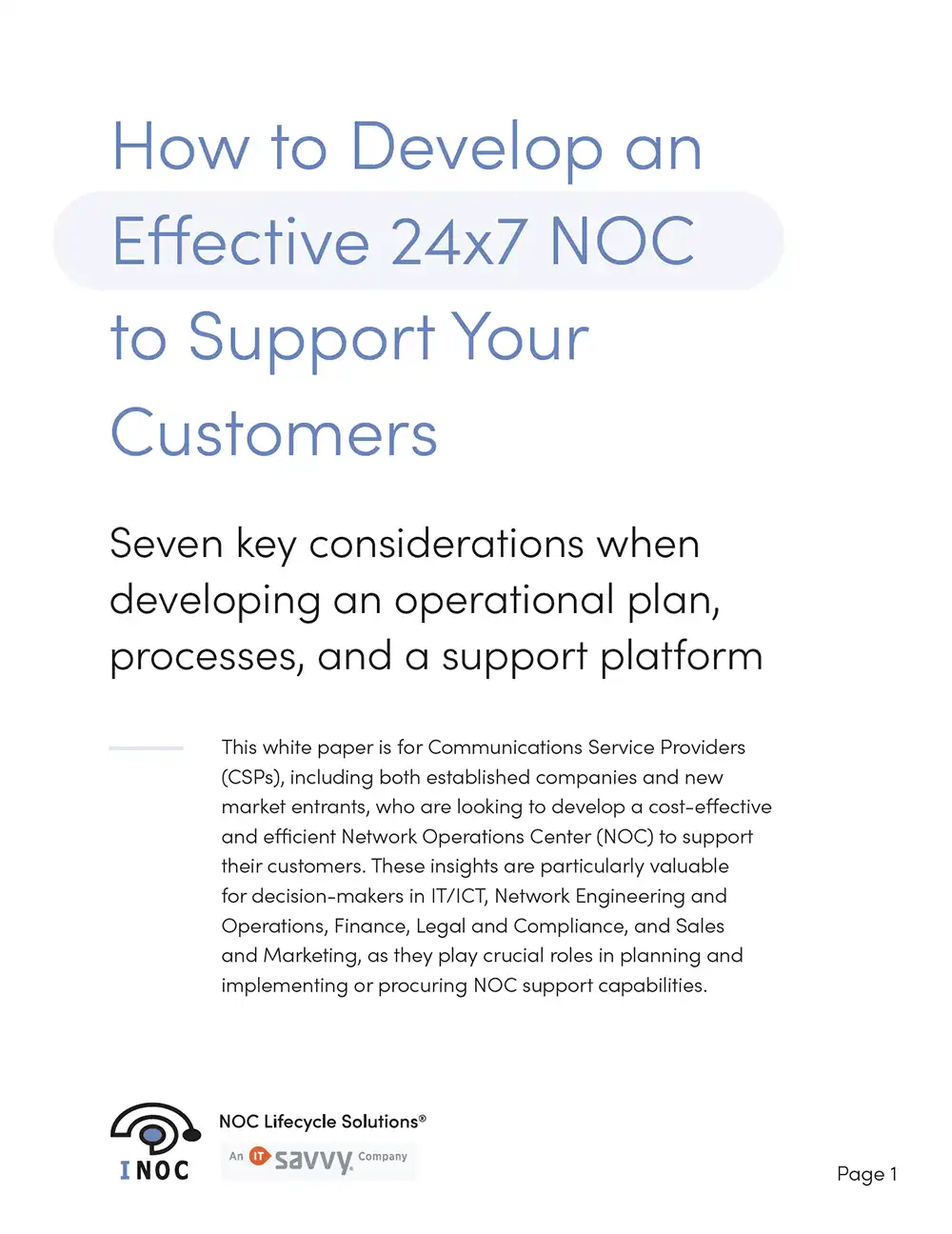

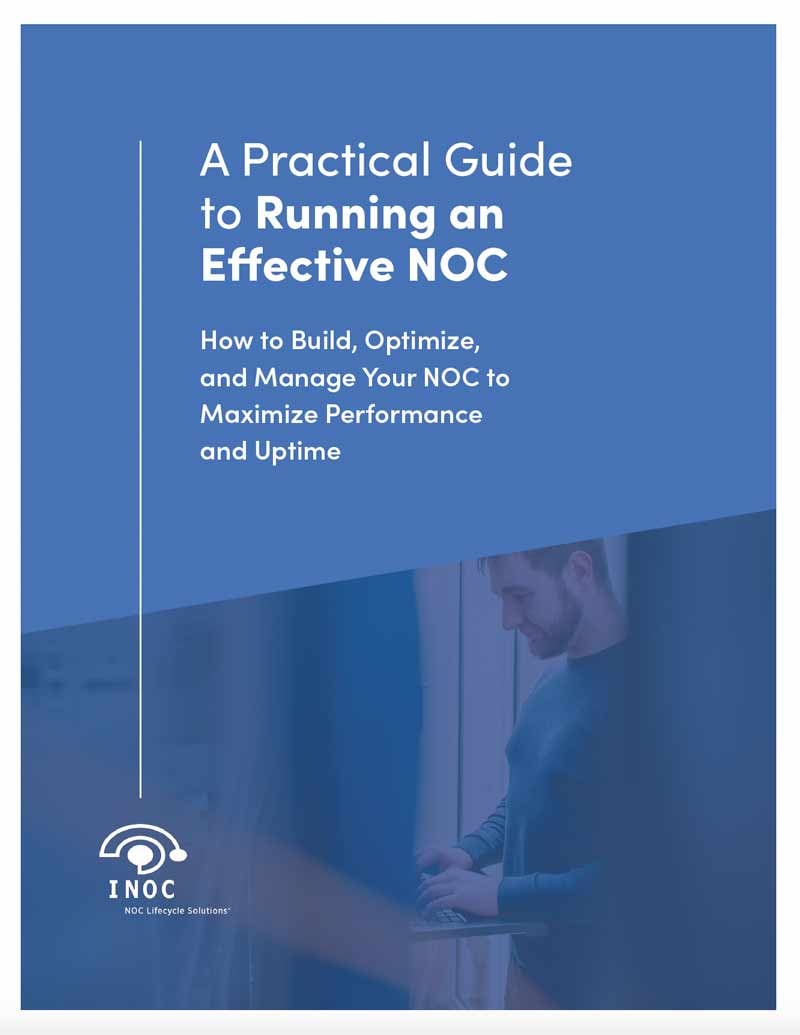
-images-0.jpg?height=2000&name=ino-WP-NOCPerformanceMetrics-01%20(1)-images-0.jpg)



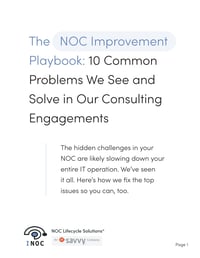

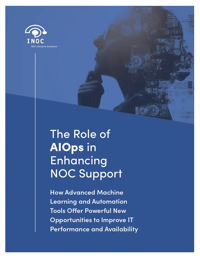

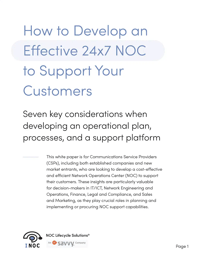
-images-0.jpg?width=200&height=259&name=ino-WP-NOCPerformanceMetrics-01%20(1)-images-0.jpg)